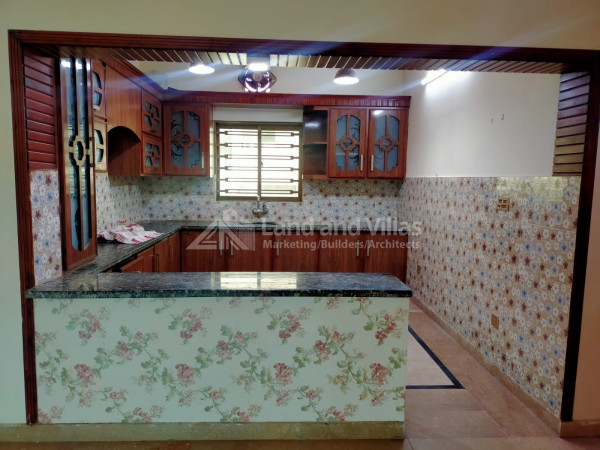To estimate the value of something, there are some techniques which are as follows.
The market approach is a method of determining the value of an asset based on the selling price of similar assets. Because the market approach relies on comparisons to similar assets, it is most useful when there is substantial data available regarding recent sales of comparable assets
Cost Comparison Approaches:
Construction cost-Rs:1500/feet plus plot cost or The cost approach is a real estate valuation method that estimates the price a buyer should pay for a piece of property is equal the cost to build an equivalent building.
In the cost approach, the property's value is equal to the cost of land, plus total costs of construction, less depreciation
For instance, you want to purchase a property that costs $1.5 million.
You found out that the price of constructing an equivalent property only costs $1.3 million. Would you still purchase the property or just build one from scratch?
It wouldn’t make sense for you to purchase at $1.5 million when a new one costs $200,000 less. This is the logic behind the cost approach.
Property value = value of the land + cost of construction – depreciation
What is Depreciation? Depreciation is the process of deducing the loss in value of a building or structure and its improvements. It is also called obsolescence.
This loss of value causes the difference between the market value of a property when it was first bought and its current income value
What are the Forms of Depreciation?
There are three forms of depreciation namely physical, economic, and functional obsolescence.
Physical depreciation: is the wear and tear of buildings over time.
Functional depreciation: happens when a property’s worth reduces due to outdated design and features. It is also affected by changes in consumer tastes and preferences.
Economic depreciation: is the decrease in the income value of the property due to influential economic factors.
This can include:
- Recession
- A general decrease in real estate properties
- The collapse of major employers
- Development of properties such as a sewer treatment plant, a landfill, etc.
What are the Pros and Cons of Using the Cost Approach?
Pros:
- This approach is accurate in evaluating special-use and unique buildings.
- The cost approach does not focus on the prices of similar homes. Rather, it calculates how much the building would be if it were created from scratch.
- This method factors in the worth of the land and already makes deductions for any loss in value.
Cons:
- Comparable land may not always be available, which means that the appraisal may not always be accurate.
In practice, this method is considered less reliable than the income and comparison methods.
Income Comparison Approaches OR Income Capitalization Approach:
Amount of net income that the property can reasonably be expected to produce for its owner plus any anticipated price increase or decrease
Property Market Value (V) = Net Operating Income per year (I) / Capitalization Rate (R)
Monthly Cash Flow or NOI = Rental Revenue – Rental Property Operating Expenses (mortgage, insurance, repairs, property management, Taxes, etc.)
You can break down the formula for net operating income (NOI) in four steps:
Estimate Potential Gross Income
Potential gross income is the income expected from a property that has 100 percent occupancy. This is also assuming that all occupancies are at market rent, lease rent, or both.
- Market Rent: usual rent charged for a particular space in the marketplace
- Lease Rent: scheduled or contract rent
Potential gross income must include all sources of income even those coming from laundry machines and rented parking spaces (if there are any.)
Subtract Vacancy and Collection Loss (A conservative estimate of vacancy expenses is generally accepted to be about 10 percent of monthly rent add lump sum 15% for residential and 20% for commercial for all operating charges including taxes, maintenance and vacancy rate).
Based on the market and local area of the property, an appraiser estimates the non-payment of rent and periodic vacancies. This determines the normal loss of income.
After you subtract the loss of income from the potential gross income, you now have an effective gross income.
Estimate Operating Expenses
There are three types of building expenses:
- Fixed: expenses that don’t get affected by a building’s occupancy (e.g. property taxes, insurance, etc.)
- Variable: expenses affected by a building’s occupancy (e.g. snow removal, utilities, management fees, etc.)
- Reserves: often called reserves for replacements, these are funds reserved for items that have to be replaced periodically, not necessarily on an annual basis (e.g. cooking stove, built-in appliances, etc.)
These expenses DO NOT include debt services like mortgage payments and building depreciation.
Subtract All Expenses
Now that you have an estimate of your operating expenses, you subtract these from your previously calculated effective gross income.
The final amount is now your net operating income (NOI).
Cap Rate (R) = Net Operating Income per year (I) / Sales Price (V)
The capitalization rate is a rate of return on a real estate investment property. This estimates the expected returns based on the property’s market price.
You can find it by dividing net operating income by total property price. If NOI is $30,000 and price is $300,000, the equation would look like this: $30,000 / $300,000 = 0.1 for a cap rate of 10. That's pretty good. Many investors look for a cap rate of 8 or more, and this hypothetical property qualifies. Few will touch a cap rate of 6 or less.
Rental yield Method:
Rental Yield Gross = Annual rent gross / Property value
Note. For residential the average rental yield value is 3 to 4% (Avg 3.5%) & internationally it ranges between 4 to 5%
For commercial purpose its value is 6 to 8% (Avg 7%)
For instance, 120,000 x 12 / 20,000,000 = 0.072 or 7.2%
P.V (Property value) = Annual rent / Rental yield
P.V = 120,000 x 12 / 0.072 = 20,000,000
Now from this value if we want to calculate rent then
Rental value = 20,000,000 x 0.072 = 1,440,000
For information
If rental value is 1,440,000 and property value is 50,000,000 then calculate rental yield, if rental yield is below average rental yield value what will be the value of property we offer against that rental return
Rental yield = Annual rent / Property Value
= 1,440,000 / 50,000,000 = 0.288 or 2.88% which is less than average value of rental yield (3.5%) now what amount or value of this property we should pay or what will be the value
Property Value = 1,440,000 / 0.035 = 41,150,000 OR 3.5 / 2.88 = 1.215 now 50,000,000 / 1.215 = 41,150,000
Rental yield with this value = 1,440,000 / 41,150,000 = 0.0349 say 0.350 or 3.5%.
GRM (Gross Rent Multiplier):
Gross rent multiplier (GRM) is the ratio of the price of a real estate investment to its annual rental income before accounting for expenses such as property taxes, insurance, and utilities; GRM is the number of years the property would take to pay for itself in gross received rent.
Typically, investors and real estate specialists would say that a GRM between 4 to 7 are considered to be 'healthy. ' Anything above would mean having a more difficult time paying off the property price gross with the annual gross annual income of the rent.
Note. For residential the average rental yield value is 3 to 4% (Avg 3.5%) & internationally it ranges between 4 to 5%
For commercial purpose its value is 6 to 8% (Avg 7%).
Rental yield factor OR GRM = Market value / Annual gross rent (will give directly multiply factor for P.V)
Rental yield factor or GRM = 20,000,000 / 1,440,000 = 13.89
P.V = Rental yield Factor x Annual rent
P.V = 13.89 x 1,440,000 = 20,000,000
Note. To calculate the P.V with ICA, Rental yield, GRM or 1% rule it’s better to compare the P.V with CCA method also as in some cases it will give high value of property
For instance, a triple story house in CBR Islamabad has market value of 23.0 million with annual rental return of 1,020,000/-, now what will be the rental yield and P.V through this rental yield
Rental yield = we said for residential its between 3 to 4% (avg 3.5%) meaning 1/3.5 = 0.2857 or 28.57 (multiply factor)
P.V = 28.57 x annual rent gross or Annual rent gross / 0.035 = 28.57 x 1,020,000 = 29,141,400 which is very high as per market value now we have to use CCA method to evaluate the estimated value
Note. Rental yield method and CCA, ICA are best approaches to calculate estimated values, GRM & 1% rule are very crude ways to analyse any property.
What is the 1% Rule for rental ROI? (If its > 1% not good, equal or < 1% is ok):
Investors and real estate coaches will often encourage people to use the “1% Rule” when evaluating rental property opportunities. The 1% Rule is another way of using gross rents to place a value on a property. The 1% Rule states that gross monthly rents should be equivalent to at least 1% of the purchase price.
For example, a property that sells for $500,000 should generate $5,000 in gross rents per month. A property that sells for $1,000,000 should generate at least $10,000 in gross rents per month.
Like GRM, the 1% Rule provides a crude way to quickly analyse investment opportunities. If a property is listed for $750,000 but only generates $5,000 in monthly rents, this might automatically disqualify the opportunity for some investors. (750,000 / 5,000 = 150 / 100 = 1.5% which is > 1% so it’s not good)
Now, to be sure, we say this is a crude way to analyse investments because there are many other variables to take into consideration. For example, the property listed for $750,000 may only be generating $5,000 in gross monthly rents at the moment. But perhaps that’s a result of poor marketing or property management. If the rents were brought in line with market rate, it is possible that rents would be significantly higher. A savvy investor would probe further before disqualifying an investment to understand why the property is priced so high with rents so low, and whether there is an opportunity to bridge that gap resulting in a ratio closer to 1%.
![$blog_data[0]->title](https://villasystem.landandvillas.com/public/backend/assets/blog_images/Blog-635cedb743562-realestate.jpg)








